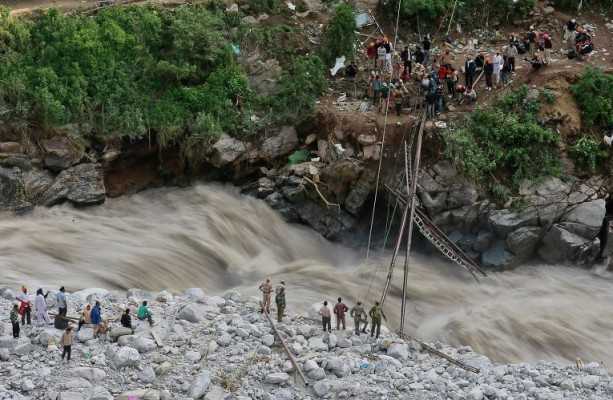
The carnage in Uttarakhand has once again underlined the dangers of fiddling with nature. A glacier break at Raini village above Rishiganga river near Tapovan Vishnugad hydropower plant, located around 280 km east of state capital Dehradun at the confluence of Dhauliganga and Rishiganga rivers, triggered a massive flood and avalanches downstream, resulting in the killing of at least ten labourers while more than 130 poor labourers, who were working at the construction site, are missing and feared to be dead. The flooding has completely washed off the 520 MW hydropower plant, which was being built at the cost of Rs 3000 crores by the state run NTPC limited. The tragedy instantly brought back memories of the massive Kedernath flooding in which more than 5000 people were killed in 2013 when heavy rainfall caused massive flash floods in the area. At the time of Kedernath tragedy, the environmental activists had asked the government to study the impact of human footfall and developmental interventions on the ecologically fragile areas of Uttarakhand which is home to several important religious places for Hindus. As usual, the government had promised to make amends to prevent the environmental degradation. But nothing was done. It is likely that the government this time too will pay lip service to the calls by environment groups for reviewing all the so called developmental projects in the ecologically sensitive mountains of Uttarakhand. Activists say these projects have wreaked havoc on the environment. While development can’t be stopped, the government needs to draw a line for what constitutes development and what is environmental vandalism. It has been often argued that developmental interventions such as the construction of hydro power projects change the economic fortunes of not just the people who live in their catchment areas but also the entire country. But more often than not, such projects not only end up destroying the lives of locals who have to give up their homes and other properties in order to pave way for such projects but also inflict permanent scars on the environment. Such developmental strategies need to be reassessed. In the context of J&K, a race has started to construct big hydro power projects on Chenab and other rivers. Then there is the upcoming Ujh project in Jammu for which the UT administration has identified more than two lakh trees which will be felled in coming days. To prevent the tragedies like the one unfurling in Uttarakhand, the government must order environment impact studies of these projects in J&K.
The carnage in Uttarakhand has once again underlined the dangers of fiddling with nature. A glacier break at Raini village above Rishiganga river near Tapovan Vishnugad hydropower plant, located around 280 km east of state capital Dehradun at the confluence of Dhauliganga and Rishiganga rivers, triggered a massive flood and avalanches downstream, resulting in the killing of at least ten labourers while more than 130 poor labourers, who were working at the construction site, are missing and feared to be dead. The flooding has completely washed off the 520 MW hydropower plant, which was being built at the cost of Rs 3000 crores by the state run NTPC limited. The tragedy instantly brought back memories of the massive Kedernath flooding in which more than 5000 people were killed in 2013 when heavy rainfall caused massive flash floods in the area. At the time of Kedernath tragedy, the environmental activists had asked the government to study the impact of human footfall and developmental interventions on the ecologically fragile areas of Uttarakhand which is home to several important religious places for Hindus. As usual, the government had promised to make amends to prevent the environmental degradation. But nothing was done. It is likely that the government this time too will pay lip service to the calls by environment groups for reviewing all the so called developmental projects in the ecologically sensitive mountains of Uttarakhand. Activists say these projects have wreaked havoc on the environment. While development can’t be stopped, the government needs to draw a line for what constitutes development and what is environmental vandalism. It has been often argued that developmental interventions such as the construction of hydro power projects change the economic fortunes of not just the people who live in their catchment areas but also the entire country. But more often than not, such projects not only end up destroying the lives of locals who have to give up their homes and other properties in order to pave way for such projects but also inflict permanent scars on the environment. Such developmental strategies need to be reassessed. In the context of J&K, a race has started to construct big hydro power projects on Chenab and other rivers. Then there is the upcoming Ujh project in Jammu for which the UT administration has identified more than two lakh trees which will be felled in coming days. To prevent the tragedies like the one unfurling in Uttarakhand, the government must order environment impact studies of these projects in J&K.
© Copyright 2023 brighterkashmir.com All Rights Reserved. Quantum Technologies